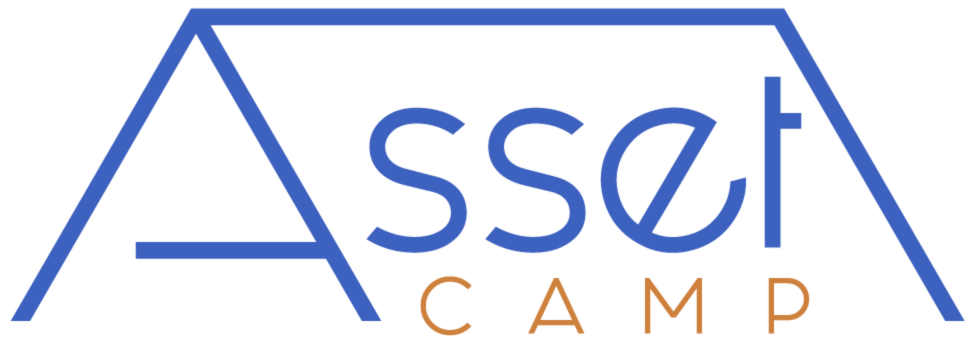Asset Camp’s Bond Market Expected Return Model is a powerful tool designed to help you analyze potential bond market returns under various economic conditions.
The bond market expected return model is found under the “Where Are We Heading?” section of Asset Camp’s bond market tools.
At the top of the page, you’ll see several options for customizing the model to reflect your assumptions. You can select different parameters such as the time period, interest rate changes, spread changes (the incremental yield corporate bonds provide above baseline Treasury bonds), default rates on corporate bonds, and recovery rates (the portion of the bond value recovered if it defaults).
Time Period
You can select between one and ten years in the drop-down menu to model how many years you want to look ahead. The time period selected matches the Expected Annualized Return in the far-right column of the table.
Starting Yield to Maturity
One of the key metrics that the model uses is Yield to Maturity (YTM). YTM represents the best estimate of a bond’s annualized return if held to maturity, assuming no changes in interest rates or default risk.
The model starts by displaying the current YTM for each bond index in the far-left column of the table.
For instance, the U.S. Corporate High Yield Bond Index may show a YTM of 7.3%, which is below its long-term average of 9.5%. No matter the time horizon selected in the tool, this YTM serves as a baseline unless other assumptions—such as changes in interest rates, spreads, or defaults—are modified. This makes YTM a critical factor for evaluating expected bond returns under stable conditions.
Interest Rate Change
The model allows you to incorporate different assumptions about interest rates, which have a direct impact on bond prices. When interest rates rise, bond prices fall, and when interest rates fall, bond prices rise.
The model reflects this immediate price impact in the table in the column with the heading Absolute Price Change.
The model not only reflects this immediate price impact but also takes into account how higher or lower interest rates allow reinvestment at different yields over time. This longer-term return impact of interest rate changes is reflected in the column labeled Interest Rate Change Annual Impact.
For example, setting an interest rate increase of 3% results in an Absolute Price Change of about -19% for the U.S. Aggregate Bond Index and about -9% decline for the U.S. Corporate High Yield Index. There is also 3% Annual Return Impact when interest rates are set to increase by 3%.
Spread Change
The model also includes a feature to simulate changes in the option-adjusted spread, which represents the additional yield corporate bonds offer compared to Treasury bonds.
During times of economic stress, spreads can widen significantly, resulting in a decline in corporate bond prices.
In the model, you can isolate and adjust the spread to see how it affects bond returns.
For instance, if you anticipate a recession, you might assume that the spread on corporate bonds widens by 3%, while base interest rates fall.
The model will then show how these changes affect the price of various bond indexes in the Absolute Price Change column. The annual return impact of wider or narrower corporate spreads is reflected in the column labeled Corporate Spread Annual Return Impact.
Corporate Defaults Rate and Default Recovery Rate
Another important factor the model accounts for is the default risk of corporate bonds. You can adjust the annual corporate default rate—the percentage of corporate bonds expected to default—and the recovery rate, which determines how much of the bond’s value is recovered after a default.
For example, if you assume a 3% default rate with a 30% recovery rate, this results in an annual 70% loss on defaulted bonds, which reduces the overall return.
The annual return impact of corporate defaults (inclusive of the default rate and recovery rate) for each index is found in the column labeled Corporate Default Annual Impact.
Expected Annualized Nominal Return
As you modify these various inputs—interest rates, spreads, defaults, and recovery rates—the model dynamically updates the Expected Annualized Nominal Return column. This provides an annualized return estimate based on the specific assumptions you’ve selected. You can change the time horizon of the analysis from one year up to ten years, allowing you to see how bond returns might evolve under different conditions. This flexibility is crucial for long-term planning and assessing the risks and rewards associated with different bond investments.
Comparing Different Bond Indexes
The model allows you to compare different bond indexes. For simplicity, you can select two or three indexes at a time to evaluate how various market factors affect their expected returns. You do this by checking the box to the left of the index name and then selecting the Compare Index button at the top right of the table.
To return to the full index list, click the Return to Full List button.
Ranking Bond Indexes
You can rank each of the bond indexes from highest to lowest or lowest to highest for each of the factors shown in the bond market expected return table. To do this, click a column label.
Conclusion
Overall, the bond market expected return model offers unparalleled flexibility by allowing you to adjust key market variables and observe their impact on bond returns over a range of time periods. Whether you are looking at interest rates, credit spreads, or defaults, the model provides an in-depth understanding of the forces that drive bond market performance, helping you make more informed investment decisions.




